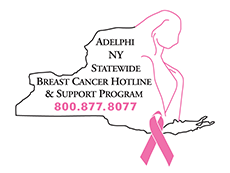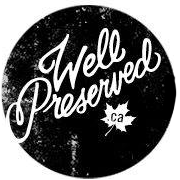

Many people, when they think of New York (especially an “urban” area like Queens), don’t realize that New York used to be full of farms. The entire state, particularly Long Island, was/is fertile farmland. The soil in many areas, particularly the area in Queens I’ll be discussing here, is perfect for farming being that it’s loamy (a balanced mix of sand, silt, clay & soil). That & the fact that the original settlers were Dutch farmers means that NY has a rich agricultural history. During the 1840’s in particular New York, along with Pennsylvania, was a chief wheat-growing state. Betcha didn’t know that!
Large manors emerged during the 18th century, including Livingston, Cortlandt, Philipsburg, and Rensselaerswyck.[Note 3] The manors represented more than half of the colony’s undeveloped land. The Province of New York thrived during this time, its economy strengthened by Long Island and Hudson Valley agriculture, in conjunction with trade and artisanal activity at the Port of New York; the colony was a breadbasket and lumberyard for the British sugar colonies in the Caribbean.
-Wikipedia
New York still has a lot of farms, although now it seems most of them are the smaller scale ones that offer pumpkin or apple picking & hayrides in the fall. There are still tons of apple orchards not to mention full-scale farms upstate. However, you can find some downstate as well, and I’m lucky to have a couple within reasonable driving distance: Crossroads Farm at Grossman’s & the Queens County Farm Museum to name a few.


The Queens County Farm Museum dates back to 1697, & it occupies NY’s largest remaining tract of undisturbed farmland. According to the website:
The farm encompasses a 47-acre parcel that is the longest continuously farmed site in New York State. The site includes historic farm buildings, a greenhouse complex, livestock, farm vehicles and implements, planting fields, an orchard, and an herb garden.
The farm is owned by the New York City Department of Parks, operated by the Colonial Farmhouse Restoration Society of Bellerose, Inc. and is a member of the Historic House Trust of New York City.
Our farm animals and tranquil agrarian environment provide the opportunity to leave the hectic daily pace behind for an enjoyable visit to a farm without leaving the city.
I had been to the museum quite a few times as a child, mostly for the Christmas events- which are beautiful. But a few weeks back I remembered it, and came by to pick up some farm fresh eggs, but sadly they didn’t have any left by the time I got there (which was about 10:30 a.m.!). Wahhhh. The cashier told me that they sell out super quick. So I decided to come back, and this time take some photos to share with you (however I still wasn’t early enough to get any eggs)! The farm is so beautiful. You may or may not know my obsession with farms & farmland; I know I’m probably not cut out for that life myself… but it’s amazing & intriguing to me. Especially a farm that has a 300+ year history.




The photos above (and the one just below) are of the Adriance Farmhouse. The farmhouse’s original 3-room structure was built in 1772 by Jacob & Catherine Adriance, with an extension added in around 1855.
In 1772 Jacob and his wife Catherine built the earliest portion of the Adriance farmhouse, which consisted of three modest rooms. Catherine and Jacob had no children and were farming primarily as sustenance farmers to provide food for themselves in conjunction with neighboring farms, some of which were owned by other Adriance family members. When Jacob died in 1797, Hendrick Brinkerhoff, his adopted nephew, bought the farm from Jacob’s executors. Hendrick died in 1806 leaving the farm to his son, Albert Brinkerhoff. Albert’s ownership marked the end of the “Adriance Era” when he sold the farm to its next significant owner, John Bennum, Sr. The Adriance family history on the farm provides us with a profound narrative of the site’s early Dutch beginnings and of farming as a way of life from as early as the seventeenth century.
– source, QCFM


The farm changed hands relatively few times in the many years since. John Bennum ended up owning the farm during a rough period; the weather during his ownership was not conducive to a plentiful farm. Two severe droughts, one in 1819 & one in 1822, caused him to eventually sell to Daniel Lent in 1822. However, during his 9-year ownership Mr. Lent also experienced two severe droughts, and not only that but the flood of 1826. He could never quite catch up because of that & the new technology in farm equipment, which proved difficult to afford. Peter Cox was the next owner, and he was lucky to own the farm during a boon of agricultural growth (1833-1892).
The last private owner of the farm was Daniel Stattel (1892-1926). The Stattel family invested a lot in the farm, both financially & agriculturally. They installed the windmill (seen in the top farmhouse photo) as well. The Stattel family descendants are still involved with the farm today, providing rich oral history & background for the museum.
In the 1920’s Pauline Reisman, a real estate investor, bought it and promptly sold it to New York State for use by Creedmoor State Hospital. New York State purchased the farm in 1926 for Creedmoor State Hospital to use for rehabilitation of patients, growing fruits and vegetables for the kitchen at the hospital, and for growing ornamental plants and shrubs for the Creedmoor campus.


As the website says:
With the exception of the farmhouse, Creedmoor demolished all the buildings on the farm, replacing them with buildings that met their needs. Though historic structures were lost, other types of historic structures were created that have in fact presented a beneficial opportunity to the Farm Museum. Buildings constructed immediately prior to the Second World War are rarely preserved in favor of colonial or Victorian era structures, but we have been given a unique opportunity to present institutional farm buildings from the 1930s that are truly unique. As the museum continues to meet its interpretive objectives, these buildings will provide the backdrop for our unique story: farming, horticulture, and the lives of the patients and staff of Creedmoor at the farm in the 1930s.
Thankfully, in the decades after, the farm was saved from what most likely would’ve been certain demolition.
Today the Queens County Farm Museum is a New York City Landmark and on the National Register of Historic Places. Museum founder and president, James A. Trent, and New York State senator Frank Padavan spared the farm from development. Senator Padavan wrote the legislation that transferred ownership from the state to the New York City Department of Parks and protected the site from development for future generations. With all the present buildings restored, the master plan for the museum is being steadily pursued. The museum provides a broad spectrum of educational programs, public events, services, and general visiting more than 500,000 people each year. The Farm Museum is the highest attended cultural attraction in Queens County. We look forward to completing our interpretation and providing valuable services to our audience.



The farm has beautiful grounds. I mean, it’s massive. Much larger than it appears when you walk in. The gardens include greenhouses, crops, planting fields, animals & a petting zoo for children, not to mention the above “Children’s Garden,” where kids can use their senses to see the differences between different plants. For example, in the ‘taste’ section, there’s mint & in the ‘smell’ section, there’s lemon balm & dill. It’s awesome that you can let the kids eat & smell & touch things there, knowing it’s all safe & that they’re learning something. Specifically, where the food they eat comes from & how it grows.
The scenery is so beautiful & serene, you totally forget that you’re in a fairly urban area.


They sell their fresh produce & eggs at the Union Square Greenmarket as well as on premises, which I didn’t know! So if you frequent the Greenmarket, be sure to look for them. The eggs sell out CRAZY quick at the farm, though, so if you want them you have to get there a half hour before the market starts, at about 11:30 a.m., any day from Wed. – Sun. I’ve been three times & missed out on the eggs ALL THREE TIMES. So trust me, I know.
They sell flowers as well as herbs. As a matter of fact, they grow all varieties of plants & herbs & sell them in the greenhouse. I know I saw Ground Cherries for sale, as well as seeing all the usual herbs; basil, rosemary, dill, etc. You can buy them as plants or you can buy fresh cut herbs at the farm stand.




Sometimes, as you’re walking around you forget it’s not just a farm museum, but a working farm. Meaning there are tons of animals on the farm. Horses, goats, sheep… including these guys who rather liked me.




It’s important for us to protect our farmland, and respect it. Farms used to be a common sight in the U.S., now the numbers of farms have dwindled. According to the US EPA, “there are around 2.2 million farms in America, and of the over 313,000,000 people living in the United States, less than 1% of them claim farming as an occupation (and about 2% actually live on farms).” [source] Thanks to a recent boon in organic foods, the amount of farms is slightly increasing & perhaps beginning an upward path, but we have a long way to go. If we expect to fight companies like Monsanto, we need to invest more money in our local farmers. Buying real food. Preserving the heritage & history of our farms.
On that note, if you’d like to donate to the Museum, you don’t have to visit in person. You can do so online! You can “Fund a Farm animal“; they have everything from honeybees & chickens to Cotswold sheep & cows, each one a different donation level. If you’re in the area, you can become a member as well. Membership entitles you to a variety of benefits such as a gift shop discount & free admission to public events. If you live in NYC or the Long Island area, or you’re coming here for a trip, I highly suggest you make a trek out to the farm!
You can see these awesome vintage tractors.


It doesn’t matter when you plan your visit, because there’s always something going on. During the holiday season, they offer beautiful holiday events & crafts for both adults & children. They have hayrides in the fall, and of course the spring & summer is when everything really springs to life. Of course, you can also rent out the farm (or rather, areas of the farm) for weddings, birthdays, etc.
As a matter of fact, the day I went there were not only three children’s birthday parties, complete with cow print tablecloths & farm animal balloons, but there was a wedding! It looked lovely… there was a big outside tent right in the middle of the orchard all done up with tables & rustic centerpieces, and the barn was the scene of the ceremony. I didn’t want to be too intrusive taking photos while the bride & groom were taking theirs, so you can only sort of see the chairs lined up inside the barn.


The museum’s information is as follows:
Queens County Farm Museum
73-50 Little Neck Parkway
Floral Park, New York 11004-1129
(718) 347-3276
The Farm Museum is open year-round, Monday—Friday 10:00 a.m.—5:00 p.m. for outdoor visiting only.
Farmhouse tours are Sat.-Sun. 11:00 a.m. – 4:00 p.m. (April – November)
Farm stand opened June 12th | Egg sales Wed. – Sun. 12 – 5 p.m.


 I'm Marilla. A 30-something artist, hobby baker, home canning enthusiast, gardener, DIY-er, wife, mommy of a baby boy and dog mom (to another baby boy) from New York.
I'm Marilla. A 30-something artist, hobby baker, home canning enthusiast, gardener, DIY-er, wife, mommy of a baby boy and dog mom (to another baby boy) from New York. 








That’s really cool! Like absolutely serene there
It really is beautiful! You totally forget that right down the block it’s an “urban” area.
It makes it even more beautiful because the “urban” area is so close. Sorry I’m still not awake from yesterday. Just noticed that I said like instead of looks, lol!
What a lovely article! Thank you for featuring us. We’re sorry it took us so long to come across this! Hope to see you this season at the farm.
Actually when someone doesn’t understand then its up to other people that
they will help, so here it happens.
Hi there friends, how is all, and what you want
to say concerning this paragraph, in my view its in fact awesome designed for me.
Hi! I simply wish to give you a huge thumbs up for the great information you’ve
got here on this post. I’ll be coming back to your site for more soon.
I’m not that much of a online reader to be honest but your sites
really nice, keep it up! I’ll go ahead and bookmark
your site to come back later on. All the best
Wow, this article is fastidious, my sister is analyzing these kinds of things,
so I am going to let know her.
I got what you intend,saved to fav, very nice website.
Unquestionably believe that which you said. Your favorite justification appeared to be on the
net the easiest thing to be aware of. I say to you, I definitely get annoyed while people consider worries that
they plainly do not know about. You managed to hit the
nail upon the top and defined out the whole thing without having side-effects , people could take
a signal. Will probably be back to get more. Thanks
Hi, I think your blog could be having browser compatibility issues.
Whenever I look at your site in Safari, it looks fine however,
if opening in IE, it’s got some overlapping issues. I simply
wanted to provide you with a quick heads up! Other than that, great site!
This design is steller! You definitely know how to keep a reader amused.
Between your wit and your videos, I was almost moved to start my own blog
(well, almost…HaHa!) Wonderful job. I really loved what you had to say,
and more than that, how you presented it. Too cool!
Just what I was looking for, appreciate it for posting.
Some genuinely howling work on behalf of the owner of this internet site, utterly outstanding content.
It’s amazing to go to see this web site and reading the views of all colleagues concerning this article, while I am
also zealous of getting experience.
Pretty section of content. I just stumbled
upon your website and in accession capital to assert that I acquire in fact enjoyed account your
blog posts. Any way I’ll be subscribing to your feeds and even I achievement you access consistently rapidly.
I read this paragraph completely regarding the difference of most up-to-date and earlier technologies, it’s
remarkable article.
Hello there, just became alert to your blog through Google, and found that it’s truly informative.
I’m going to watch out for brussels. I’ll appreciate
if you continue this in future. Lots of people will be benefited from
your writing. Cheers!
I was curious if you ever thought of changing
the structure of your website? Its very well written;
I love what youve got to say. But maybe you could a little more in the way
of content so people could connect with it
better. Youve got an awful lot of text for only having 1 or 2 images.
Maybe you could space it out better?
Your style is really unique compared to other
people I’ve read stuff from. I appreciate you for posting when you’ve got the opportunity, Guess I’ll just
book mark this blog.
There is certainly a lot to find out about this issue.
I love all of the points you’ve made.
Thanks for your marvelous posting! I seriously enjoyed reading
it, you will be a great author. I will remember to bookmark
your blog and will eventually come back very soon. I want to encourage continue your great writing,
have a nice holiday weekend!
If you desire to get a great deal from this article then you have to apply such strategies to your won weblog.
It’s remarkable to pay a quick visit this website and reading the views of all friends about this post, while I am also keen of getting knowledge.
I love what you guys tend to be up too. This sort of clever work and
reporting! Keep up the wonderful works guys I’ve you guys to my
blogroll.
What’s up, I desire to subscribe for this blog to take newest
updates, so where can i do it please help
out.
Your mode of describing the whole thing in this article is really nice, every one be capable of without difficulty know
it, Thanks a lot.
constantly i used to read smaller content that as well clear their motive, and
that is also happening with this article which I am reading here.
Hey! This is my first visit to your blog! We are a collection of
volunteers and starting a new initiative in a community in the same niche.
Your blog provided us beneficial information to work on. You have done a extraordinary job!
I truly love your website.. Very nice colors &
theme. Did you develop this amazing site yourself?
Please reply back as I’m looking to create my very own website and would like to learn where you got this from or exactly what the theme is named.
Appreciate it!